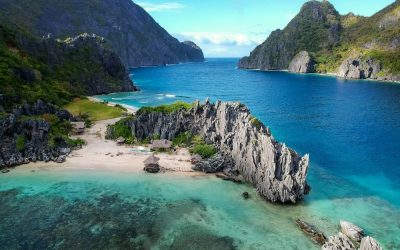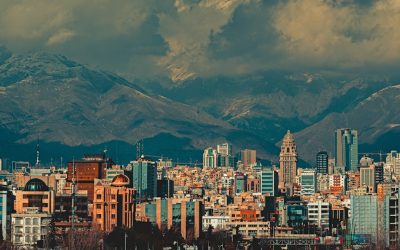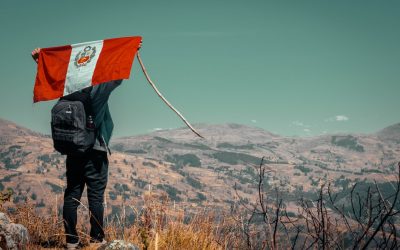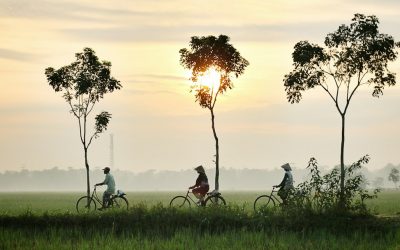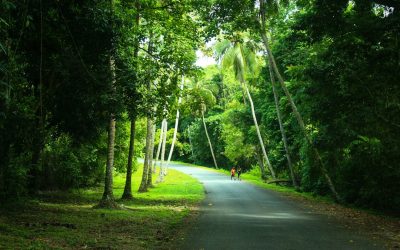Explore the World Through Geography, Natural Resources & Daily History
Clear, reliable and engaging guides that help you understand our planet — from UK geography education to global natural resources and On This Day history events.
Explore, discover, and learn about the wonders of our world! At Earth Site, we’re passionate about bringing geography, history, and science to life for curious minds of all ages. Whether you’re delving into historical events, uncovering the mysteries of the natural world, or seeking interactive resources, you’re in the right place.
Here, you can uncover the stories behind historical events, explore the natural wonders of our planet, and gain valuable insights into how the Earth’s systems shape our daily lives. From the towering peaks of mountain ranges to the far-reaching impacts of human innovation, we aim to make every topic both engaging and informative.
Start your journey of discovery with us today, and let’s make learning an adventure!
What We Cover
Earth Site brings together engaging and accessible educational content designed to help you understand the world, its history, and its natural systems.
🌍 Geography Education (UK & Worldwide)
We publish clear, easy-to-understand geography resources for students, teachers and curious learners. Our guides support geography education in the UK and cover physical geography, climate, ecosystems, population, and global development.
⛏️ Natural Resources & Environmental Geography
Explore detailed country profiles covering natural resources, mining, energy, geology and global environmental challenges. We show how nations manage minerals, water, land and ecosystems, and why these resources matter.
📅 On This Day in History
Every day has a story. Our On This Day history series features major events, anniversaries, traditions, and cultural milestones from around the world — with timelines, context, and fun facts.
TIMELINE
Exploring the Rich Culture and History of Poland: A Journey Through the Heart of Eastern Europe
Poland, located in Central Europe, is a country with a rich and fascinating history. It is bordered by Germany to the west, the Czech Republic and Slovakia to the south, Ukraine and Belarus to the east, and Lithuania and Russia to the northeast. With a population of over 38 million people, Poland is the ninth-largest country in Europe. The official language is Polish, which is spoken by the majority of the population. Poland’s history and culture have played a significant role in shaping Europe as we know it today. From its medieval beginnings to its modern-day struggles and triumphs, Poland has been at the center of major historical events. The country has faced numerous invasions, partitions, and occupations throughout its history, but it has always managed to maintain its unique identity and spirit. Summary Poland is a country with a rich history and culture. Warsaw, Krakow, and Gdansk are vibrant cities worth exploring. Poland’s history spans from medieval times to modern day. Gothic, Renaissance, and Baroque architecture can be found throughout Poland. Pierogi, Kielbasa, and Bigos are just a few of the delicious dishes to try in Poland. Discovering the Vibrant Cities of Poland: Warsaw, Krakow, and Gdansk Poland is home to several vibrant cities that offer a unique blend of history, culture, and modernity. Warsaw, the capital city, is a bustling metropolis with a rich architectural heritage. The Old Town of Warsaw, a UNESCO World Heritage site, is a must-visit for its beautifully restored buildings and charming cobblestone streets. The Royal Castle and Wilanów Palace are also worth exploring for their historical significance. Krakow, located in southern...
Exploring the Rich Culture and History of Iraq: A Journey Through Mesopotamia
Mesopotamia, which means “land between rivers” in Greek, refers to the region located between the Tigris and Euphrates rivers in modern-day Iraq. It is often referred to as the cradle of civilization because it is believed to be one of the earliest sites of human civilization. Mesopotamia played a crucial role in world history, as it was the birthplace of many important developments and innovations that shaped the course of human civilization. The civilization of Mesopotamia emerged around 3500 BCE and lasted for several millennia until it was eventually conquered by other empires. During this time, the Mesopotamians made significant advancements in various fields such as agriculture, architecture, art, literature, science, mathematics, and trade. They developed complex systems of writing, created impressive architectural structures such as ziggurats, and established a legal system that influenced later civilizations. Summary Mesopotamia is considered the cradle of civilization. The ancient city of Babylon provides a glimpse into the past. The ziggurats of Ur showcase the impressive architecture of Mesopotamia. Mesopotamia has a rich legacy of art, literature, and creativity. The Mesopotamian pantheon features a diverse array of gods and goddesses. The Ancient City of Babylon: A Window into the Past One of the most famous cities in Mesopotamia is Babylon. Located on the banks of the Euphrates River, Babylon was a major political and cultural center in ancient times. The city has a long and rich history that dates back to around 2300 BCE when it was first mentioned in historical records. Babylon is known for its impressive landmarks and structures. One of the most famous is the Hanging Gardens of Babylon, which...
Discovering the Hidden Gems of the Philippines: A British Traveller’s Guide
The Philippines is a country that offers a diverse range of experiences for travellers, making it an ideal destination for British travellers seeking adventure, relaxation, and cultural immersion. With its stunning beaches, vibrant cities, rich history and culture, and warm hospitality, the Philippines has something to offer every type of traveller. From the untouched beauty of Palawan to the bustling streets of Manila, the Cordillera Mountains’ off-the-beaten-path adventures to the pristine beaches of the Visayas, there is no shortage of incredible experiences to be had in this Southeast Asian gem. British travellers should consider visiting the Philippines for several reasons. Firstly, the country boasts some of the most beautiful beaches in the world. With over 7,000 islands, there are endless opportunities for island-hopping, snorkelling, diving, and simply relaxing on white sandy shores. Secondly, the Philippines is known for its warm and welcoming people. Filipinos are known for their hospitality and friendliness towards visitors, making it a pleasant and enjoyable experience for British travellers. Lastly, the Philippines offers a unique blend of cultures and traditions. With influences from Spanish, American, and indigenous cultures, there is a rich tapestry of history and heritage to explore throughout the country. Summary The Philippines is a must-visit destination for British travellers, offering untouched beauty, vibrant culture, and off-the-beaten-path adventures. Palawan is the Philippines’ best island, with stunning natural beauty and opportunities for island-hopping and diving. Manila is a vibrant city with a rich cultural heritage, perfect for first-time visitors looking to explore the Philippines’ history and cuisine. The Cordillera Mountains offer trekking and cultural experiences in the northern Philippines, away from the tourist crowds....
Exploring the Fascinating World of Primates: From Lemurs to Humans
Primates are a diverse group of mammals that includes humans, apes, monkeys, and prosimians such as lemurs and tarsiers. They are characterized by their forward-facing eyes, grasping hands and feet, and complex social behaviors. Primates can be found in a variety of habitats around the world, from tropical rainforests to savannahs and even high-altitude mountain ranges. The diversity of primates is vast, with over 500 species identified to date. They vary greatly in size, ranging from the tiny pygmy mouse lemur, which weighs just 30 grams, to the large male gorilla, which can weigh up to 200 kilograms. Primates also exhibit a wide range of adaptations to their environments. For example, lemurs have long tails that they use for balance when leaping through the trees, while spider monkeys have long limbs that allow them to swing effortlessly from branch to branch. Summary Primates are a diverse group of animals with unique adaptations to their environments. The evolutionary history of primates spans from ancient prosimians to modern humans. Primates have unique anatomical and physiological features, such as opposable thumbs and binocular vision. Primate social structures and communication are complex and varied. Primate intelligence and cognition are demonstrated through learning, memory, and problem-solving. Evolutionary History of Primates: From Ancient Prosimians to Modern Humans The evolutionary history of primates stretches back over 60 million years. The earliest primates were small, nocturnal animals that resembled modern-day lemurs and tarsiers. These early primates lived in trees and had adaptations such as grasping hands and feet for climbing and leaping. Over time, primates evolved into two main groups: the prosimians and the anthropoids. Prosimians include...
Exploring the Rich Culture and History of Iran: A Journey Through Persia
Iran, formerly known as Persia, is a country with a rich cultural heritage and a history that spans thousands of years. Situated in the Middle East, Iran has been a crossroads of civilizations, with influences from ancient Mesopotamia, Greece, and Central Asia. This diverse cultural background has shaped Iran into a unique and fascinating destination for those interested in exploring its history, art, architecture, cuisine, and more. Exploring Iran’s diverse cultural offerings is not only an opportunity to learn about its rich history but also a chance to appreciate the beauty and intricacy of its art and architecture. From awe-inspiring monuments and mosques to vibrant festivals and delicious cuisine, Iran offers a wealth of experiences that will leave visitors in awe. Summary Iran has a rich culture and history that spans thousands of years. The architecture of Persia is awe-inspiring, with magnificent monuments and mosques. Persian art includes miniatures and calligraphy, showcasing the country’s artistic talent. Iranian cuisine is a delicious blend of flavours and spices, reflecting the country’s diverse cultural influences. The Persian carpet industry is a timeless tradition of beauty and skill, with intricate designs and patterns. The Magnificent Architecture of Persia: Awe-Inspiring Monuments and Mosques Persian architecture is renowned for its grandeur and beauty. It has had a significant influence on modern-day design, with its intricate patterns and use of geometric shapes. The architecture of Persia is characterized by its use of domes, arches, and minarets, which can be seen in famous structures such as the Persepolis and the Sheikh Lotfollah Mosque. Persepolis, located in the city of Shiraz, is an ancient city that was once...
The Benefits and Drawbacks of Chlorine (Cl) in British Swimming Pools
Chlorine has been used as a disinfectant in swimming pools for many years. Its use can be traced back to the early 20th century when it was discovered that chlorine effectively killed bacteria and viruses in water. Since then, chlorine has become the most widely used method for maintaining clean and safe swimming pool water. The importance of maintaining clean and safe swimming pool water cannot be overstated. Without proper disinfection, swimming pools can become breeding grounds for harmful bacteria and viruses. These microorganisms can cause a range of illnesses, from mild skin infections to more serious respiratory and gastrointestinal diseases. Therefore, it is crucial to use an effective disinfectant like chlorine to ensure the health and safety of swimmers. Summary Chlorine is commonly used in British swimming pools to maintain water quality and prevent the spread of disease. Advantages of using chlorine include its effectiveness in killing bacteria and viruses, affordability, and ease of use. Disadvantages of using chlorine include its potential to cause skin and eye irritation, unpleasant odours, and the formation of harmful byproducts. Chlorine can impact water quality by creating a chemical imbalance and causing cloudiness or discolouration. Exposure to chlorine can have negative effects on swimmer health, including respiratory issues and skin irritation. The Advantages of Using Chlorine in Swimming Pools One of the main advantages of using chlorine in swimming pools is its effectiveness in killing bacteria and viruses. Chlorine is a powerful disinfectant that can quickly eliminate harmful microorganisms, making the water safe for swimmers. It is also effective in preventing the growth of algae and other organic matter that can make...
Exploring the Wonders of Peru: A Journey Through the Land of the Incas
Peru, located in South America, is a country known for its diverse geography, rich history, and vibrant culture. From the towering peaks of the Andes Mountains to the lush Amazon rainforest, Peru offers a wide range of natural wonders to explore. The country is also home to ancient civilizations, most notably the Inca Empire, whose legacy can still be seen in the magnificent ruins scattered throughout the country. Tourism plays a significant role in Peru’s economy, attracting millions of visitors each year. The revenue generated from tourism helps support local communities and preserve Peru’s natural and cultural heritage. With its stunning landscapes, archaeological sites, and unique traditions, Peru offers a truly immersive experience for travelers seeking adventure and cultural enrichment. Summary Peru is a diverse country with a rich culture that is worth exploring. The ancient Inca civilization is shrouded in mystery and offers a fascinating glimpse into the past. Peru’s natural wonders, from the Andes to the Amazon, are breathtaking and offer a unique experience. Lima is a vibrant capital city that serves as a gateway to Peru and offers a taste of modern Peruvian culture. Cusco is the heart of Inca civilization and the gateway to Machu Picchu, a majestic and enigmatic Inca citadel. Discovering the Mysteries of the Ancient Inca Civilization The Inca Empire was one of the most advanced civilizations in the Americas before the arrival of the Spanish conquistadors. The empire spanned from Ecuador to Chile and reached its peak in the 15th century. The Incas were known for their impressive architectural skills, agricultural techniques, and intricate social structure. One of the most famous...
Exploring the Wonders of Indonesia: A Journey Through the World’s Largest Archipelago
Indonesia, located in Southeast Asia, is the largest archipelago in the world, consisting of over 17,000 islands. This vast country is known for its stunning natural landscapes, rich cultural heritage, and diverse wildlife. Each island in Indonesia offers a unique experience, from the active volcanoes of Java to the pristine beaches of Bali. With its vibrant cities, lush rainforests, and vibrant festivals, Indonesia is a destination that has something to offer every traveller. Summary Indonesia is a diverse archipelago with over 17,000 islands to explore. From volcanoes to coral reefs, Indonesia boasts a wealth of natural wonders. Indonesia’s rich cultural heritage is evident in its art, architecture, and traditions. Indonesian cuisine is a delicious blend of spices, herbs, and fresh ingredients. Indonesia’s cities and towns offer a vibrant mix of modernity and tradition. Indonesia’s Natural Wonders: From Volcanoes to Coral Reefs One of the most striking features of Indonesia’s geography is its active volcanoes. The country is part of the Pacific Ring of Fire, a region known for its seismic activity. Mount Bromo in East Java and Mount Rinjani in Lombok are two popular destinations for trekking enthusiasts. These volcanoes offer breathtaking views and unique landscapes that are unlike anything else in the world. Indonesia is also home to some of the most diverse and vibrant coral reefs in the world. The Coral Triangle, which includes parts of Indonesia, the Philippines, and Papua New Guinea, is considered the global epicentre of marine biodiversity. The reefs surrounding islands such as Bali and Komodo are teeming with colourful fish, turtles, and other marine life. Snorkelling and diving in these areas...
Discovering the Hidden Gems of Paraguay: A Journey Through South America’s Underrated Destination
Nestled in the heart of South America, Paraguay is often overlooked by travelers in favor of its more popular neighbors, Brazil and Argentina. However, this landlocked country has a rich cultural heritage, stunning natural landscapes, vibrant cities, and a warm and welcoming population that make it a hidden gem waiting to be discovered. In this blog post, we will delve into the many reasons why Paraguay should be on every traveler’s radar. Paraguay is located in the center of South America, bordered by Brazil to the east and northeast, Argentina to the south and southwest, and Bolivia to the northwest. It has a fascinating history that dates back thousands of years, with indigenous cultures flourishing long before the arrival of Spanish colonizers in the 16th century. Despite its historical significance and natural beauty, Paraguay remains relatively unknown to international tourists. In this blog post, we will explore Paraguay’s rich cultural heritage, from its indigenous roots to the influence of Spanish colonization. We will also delve into the country’s diverse landscapes, from the vast Chaco region to the Pantanal wetlands. Additionally, we will highlight Paraguay’s vibrant urban scene, its unique cuisine, fascinating history, warm and welcoming people, hidden gems and lesser-known destinations, adventure travel opportunities, and provide practical tips for planning a trip to this enchanting country. Summary Paraguay is a hidden gem of South America with a rich cultural heritage and natural wonders to explore. Paraguay’s cultural heritage is a blend of indigenous and colonial influences, making it a unique destination. From the Chaco to the Pantanal, Paraguay offers a diverse range of natural wonders to explore. Asunción and...
Pholidota: The Fascinating World of Britain’s Spiny Anteaters
Pholidota, commonly known as pangolins or spiny anteaters, are a unique group of mammals that belong to the order Pholidota. They are characterized by their distinctive scales, which cover their bodies and provide them with protection against predators. Pholidota are fascinating creatures that have captured the attention of scientists and researchers around the world, including those in Britain. Studying Pholidota in Britain is of great importance for several reasons. Firstly, it allows us to gain a better understanding of the biodiversity and ecological dynamics of the country. Pholidota play a crucial role in maintaining the balance of ecosystems by controlling populations of ants and termites, which are their primary food sources. Additionally, studying Pholidota in Britain helps us to assess the health of their populations and the impact of human activities on their habitats. Summary Pholidota, also known as spiny anteaters, are native to Britain and have unique physical characteristics such as scales and long tails. They are solitary and nocturnal creatures that feed on ants, termites, and other insects. Pholidota’s habitat and distribution in Britain are threatened by habitat loss and hunting. Conservation efforts are being made to protect Pholidota and their importance in the ecosystem cannot be overstated. The future of Pholidota in Britain faces challenges, but opportunities for their protection and preservation exist. The Physical Characteristics of Pholidota: From Scales to Tails Pholidota are easily recognizable by their unique physical features. They have a cylindrical body covered in overlapping scales made of keratin, similar to those found in human hair and nails. These scales provide them with protection against predators and are one of the defining...
Exploring the Vibrant Culture and Rich Heritage of Incredible India
India is a land of diversity and heritage, with a rich tapestry of culture and traditions that have been passed down through generations. From its vibrant festivals to its ancient temples, from its culinary delights to its spiritual practices, India offers a treasure trove of experiences for those who seek to explore its cultural heritage. In this article, we will delve into the colourful festivals, artistic treasures, culinary delights, spiritual legacy, architectural marvels, musical heritage, traditional crafts, natural wonders, and modern innovations that make India truly incredible. Summary India is a land of diversity and heritage, with a rich cultural history. The colourful festivals of India celebrate life and spirituality and are a sight to behold. India’s artistic treasures range from ancient temples to modern museums, showcasing the country’s creativity and innovation. The culinary delights of India offer a journey through spices and flavours, with something to suit every palate. India’s spiritual legacy is evident in practices such as yoga and meditation, which have gained popularity worldwide. The Colourful Festivals of India India is known for its vibrant and lively festivals that are celebrated with great enthusiasm and fervour. One of the most famous festivals is Holi, also known as the Festival of Colors. During Holi, people come together to throw coloured powders and water at each other, symbolizing the victory of good over evil and the arrival of spring. Diwali, or the Festival of Lights, is another significant festival in India. It celebrates the victory of light over darkness and good over evil. During Diwali, people light oil lamps and candles, decorate their homes with colourful rangoli...
Exploring the Cultural Riches of Papua New Guinea: A Journey Through the Land of a Thousand Tribes
Papua New Guinea is a country located in the southwestern Pacific Ocean. It is known for its stunning natural beauty, diverse cultures, and rich history. The country is made up of the eastern half of the island of New Guinea, as well as numerous smaller islands. Papua New Guinea has a population of over 8 million people, with more than 800 different languages spoken throughout the country. The history of Papua New Guinea dates back thousands of years, with evidence of human habitation in the region dating back to at least 50,000 years ago. The country has a rich cultural heritage, with indigenous communities that have maintained their traditional way of life for centuries. These communities have a deep connection to the land and the natural environment, and their traditions and customs are an integral part of Papua New Guinea’s identity. Preserving and promoting Papua New Guinea’s cultural heritage is of utmost importance. The country’s diverse cultures and traditions are a source of pride for its people and contribute to its unique identity. By preserving and promoting these traditions, Papua New Guinea can not only maintain its cultural heritage but also attract tourists who are interested in experiencing its rich history and traditions. Summary Papua New Guinea is a land of diversity and tradition, with a rich cultural heritage. The people of Papua New Guinea are a mosaic of cultures and languages, with over 800 languages spoken. Traditional art and crafts are an important part of Papua New Guinea’s cultural heritage, with unique styles and techniques. Music and dance are integral to the rhythms of Papua New Guinea’s tribal...


